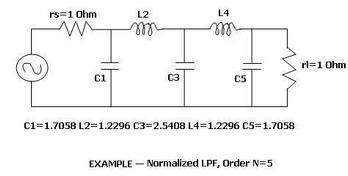
10 Advantages and 5 Disadvantages of lvdt transducer
Explore 5-10 advantages and disadvantages of LVDT transducer including benefits like high resolution and drawbacks such as temperature sensitivity.
Showing 25 posts (Page 1 of 17)
Advertisement

Explore 5-10 advantages and disadvantages of LVDT transducer including benefits like high resolution and drawbacks such as temperature sensitivity.

Explore 3 types of OCXOs with working operation and learn difference between AT, IT, and SC cut crystals.

Explore the differences between 4-port and 3-port circulators, including construction methods and S-matrix representations, highlighting their unique characteristics.

Explore the differences between 4-port and 3-port circulators, including their construction and S-matrix representations.

Explore 5 key advantages and disadvantages of condenser microphone i.e. capacitor microphone including its benefits like higher sensitivity, wide frequency response and drawbacks such as limited input level, complexity and power requirement.
Explore 5 key Advantages and Disadvantages of Cycloconverter used for AC to AC frequency conversion.
Explore 5 key advantages and disadvantages of Silicon Carbide (SiC), a semiconductor material for high-power, high-temperature applications. Learn about its benefits and limitations.

Explore 5 advantages and disadvantages of photoresistors, including their light-dependent resistance, cost-effectiveness, limitations in sensitivity, and environmental concerns.

Explore the core differences between 90-degree and 180-degree hybrids, focusing on functionality, construction, and key specifications for RF applications.

Explore the differences between absorptive and reflective RF switches, focusing on VSWR, impedance, and applications.
Explore the fundamental differences between AC and DC motors, covering current type, motor types, basic parts, and speed control.

Learn about accelerometer sensors, their function, working principle, types, specifications, and applications in various devices.
Explore the differences between Piezoelectric, Piezoresistive, Capacitive, and Servo accelerometers, including their working principles, advantages, and disadvantages.

Explore the differences between accelerometers and gyroscopes. Learn how they measure motion and orientation in various applications, including IMUs.

Explore the pros and cons of accelerometer sensors, covering their working principle, benefits like high sensitivity, and drawbacks like temperature sensitivity.

Learn about the acousto-optic modulator (AOM), its construction, and its working principle based on the acousto-optic effect for modulating optical properties.

Learn about the frequency shift in acousto-optic modulators (AOMs) and the formula for calculating the shift based on laser and RF frequencies.

Explore the differences between active and passive frequency multipliers, including their power levels, conversion loss/gain, and applications.
Explore the key differences between active and passive GPS antennas, their advantages, disadvantages, and optimal use cases for signal reception.

Explore the key differences between active and passive baluns for high-frequency circuits, their advantages, disadvantages, and applications.

Explore the core differences between active (transistors, diodes) and passive (resistors, capacitors) electronic components. Learn about their functions and characteristics.

Explore the differences between active and passive energy harvesting circuits, their advantages, and disadvantages. Learn which type is best for your application based on energy availability, complexity, and efficiency.

A detailed comparison of active and passive filters, highlighting their advantages, disadvantages, components, design complexity, frequency response, and applications.

Explore the differences between active and passive harmonic filters, their advantages, disadvantages, and how they mitigate harmonic distortion in electrical systems.
Explore the differences between active and passive infrared sensors, their advantages, disadvantages, and applications in various fields.
Advertisement